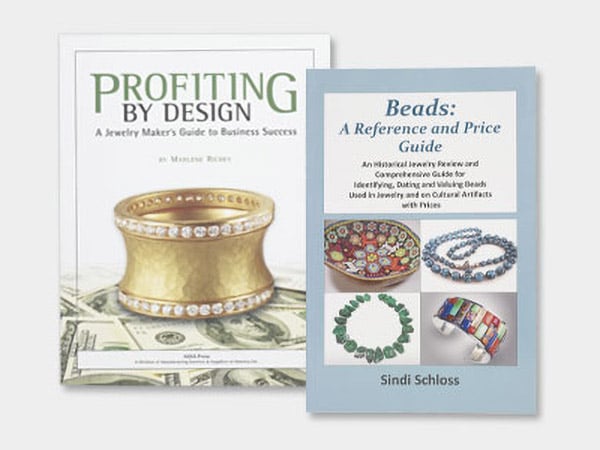Find Your Audience!
by Stephanie Hintz
Pin-pointing your niche market is a little like finding a needle in a haystack. On its own, your handmade art or craftwork--the needle--is shiny, creative, and one-of-a-kind. However, buried in the haystack of your competitors, it becomes a game of hunt-and-peck for buyers to find your needle. It doesn't have to be that hard.
Try Googling "how to identify your target handmade buyer," and you will get over three millions results--and that's no exaggeration. Who has time for that? Luckily, we do.
Google Trends
Have you heard about Google Trends? Do you know how to use this free tool? Not only is Google the most popular and widely-used search engine around, it's literally become the institution to which public opinion and interest is derived. Google Trends, https://trends.google.com/trends/, provides data about what real people are searching for online and shows the relative popularity of a search term over time.
Since our focus in this issue of Handmade Business is on jewelry, let's take a peek inside Google Trends to see what the world is searching for related to jewelry. Myself, I am a jewelry fanatic, but just because I adore jewelry and I am the editor of a magazine does not make me an expert on what people want. Neither does it make you an instant expert just because you make it. There's some homework involved before that accolade is earned.
As it turns out, when "handmade jewelry" was searched in Google Trends in all topics, I was surprised to see a slight downtick in popularity over the past few years. On another chart, I learned in which states this search was most popular: North Carolina, Tennessee, Alabama, South Carolina, Pennsylvania, and Georgia. The bottom three states were Michigan, Oregon, and Nebraska. When I isolated this search to the last 12 months, the top states with this particular search were: Tennessee, North Carolina, and Alabama. Last on this list was Texas.
Now, Google also gave me insight on other top trending related topic searches over the past 12 months. Ceramics, market, costume jewelry, diamond, and artist were the top five. The top related query? Etsy.
When I further isolated my search to "shopping" instead of "all topics," the top five related searches on the rise resulted in: bracelet, pearl, pendant, gemstone, and Etsy. The top five trending related topics were bracelet, bead, earring, pearl, and pendant.
Alright, now let's search "wholesale jewelry." In the past 12 months in the U.S., the last big peak in web searches for this term was June 19-25, 2016--just in time for summer market season! The top rising related topics were rock, gemstone, and stainless steel.
As you can see, by using Google Trends, you can narrow down what part of the country, or world, people are searching for--and likely buying--your type of products, as well as learn about other related items they are searching for.
Art Trade Reports
Journalists and art analysts have long expressed mixed reviews on using data reports as reputable sources of information. Why? When looking at the big picture, the sample of surveyed respondents is often relatively small. However, there is creditability to these sources, which do spend considerable time, money, resources, and effort to identify and interrogate the ideal sample market.
For example, in the recently released 2017 Hiscox Online Art Trade Report, one finding was that Instagram has overtaken Facebook as the preferred social media channel for the art world, with 57 percent of art buyers saying this is the most frequent social media platform used--up from 48 percent in 2016 and 34 percent in 2015.
Getting to Know Generation Y:
20-35 year-olds
- The number one motivation for buying art is for the emotional benefit (passion for art)
- The number two motivation for buying art is for return on investment
- 49 percent prefer to buy art in a physical space; 29 percent have no preference; 22 percent prefer to buy online
- A desktop PC is their device of choice when buying art online
- Online marketplaces are the top platforms for online art purchases
- Order of popularity of mediums purchased: prints, paintings, photographs, drawings, sculpture, and digital art.
Another key finding is that despite a slowing of the global art market, online art market sales increased 15 percent in 2016 over the previous year. The obstacles in converting hesitant online art browsers to shoppers are: the lack of physical inspection, worries about the work's condition, authenticity, and the seller's reputation. Respondents also said they wished to know more background information on the pieces and about the artists. So, when artists focus on these concerns, they will improve the conversion rate of buyers who are on the fence into bonafide art owners.
In another study, according to the TEFAC (The European Fine Art Foundation) Art Market Report 2017, in 2016 the U.S. maintained 29 percent of the world's art market share, followed by the United Kingdom with 24 percent, and China with 18 percent. The TEFAC report also indicates that in the U.S., buyers are shifting more to the private sector to buy art--through privately brokered sales by auction houses, art galleries, and dealers. The report also shows that higher quality works by lesser known artists were preferred to average works by blue-chip artists.
Real world analysis
On a more sub-cultural level, adaptive media sources, such as Mindshare (www.mindshare.com), credits the future of commerce to the adaptive consumer--in a world where the consumer molds the products and they name their price and place of purchase.
In their own report, the 2017 Culture Vulture Trends Report, in its sixth year, Mindshare explores how a consumer's time is critical: "67 percent of Americans say that they are so busy that they can't finish everything they need to in a day. Our time spent with media is reaching its saturation point, with people averaging 10 hours each day consuming content."
While some reports point to the fact that businesses should market heavily to Millennials, the Culture Vulture Report notes the opposite: "Being older is becoming cooler, making Boomers more relevant to brands." Also of note, is the report's implication that American consumers have become increasingly distracted, and thus seek purpose, serenity, and mindfulness. These types of consumers are the right fit for the handmade marketplace--it's up to you to win them over.
Photo Credit: Patrick Tomasso instagram.com/impatrickt
How to Work Smarter
- Hunt harder to find pockets of growth; consider different targets
- Be more competitive and faster in a low-growth world
- Get ahead of emerging categories before those opportunities become tapped out
- Challenge everything--think about assumptions you're making in your category and target. How can you use data to either prove or disprove them?
- Think about mindfulness and what it means for your category, brand, and consumer
- Consider when your messages are deployed; have breaks to respect the consumer's personal space
- Determine how your brand can be irreverent
- Tie your brand to peak moments in consumers' lives
- Build a community of current, trusted consumers and engage with them regularly
- Make trust one of your brand metrics
Shop for Your Materials Here:
Have a question regarding this project? Email Customer Service.
Copyright Permissions
All works of authorship (articles, videos, tutorials and other creative works) are from the Fire Mountain Gems and Beads® Collection, and permission to copy is granted for non-commercial educational purposes only. All other reproduction requires written permission. For more information, please email copyrightpermission@firemtn.com.




